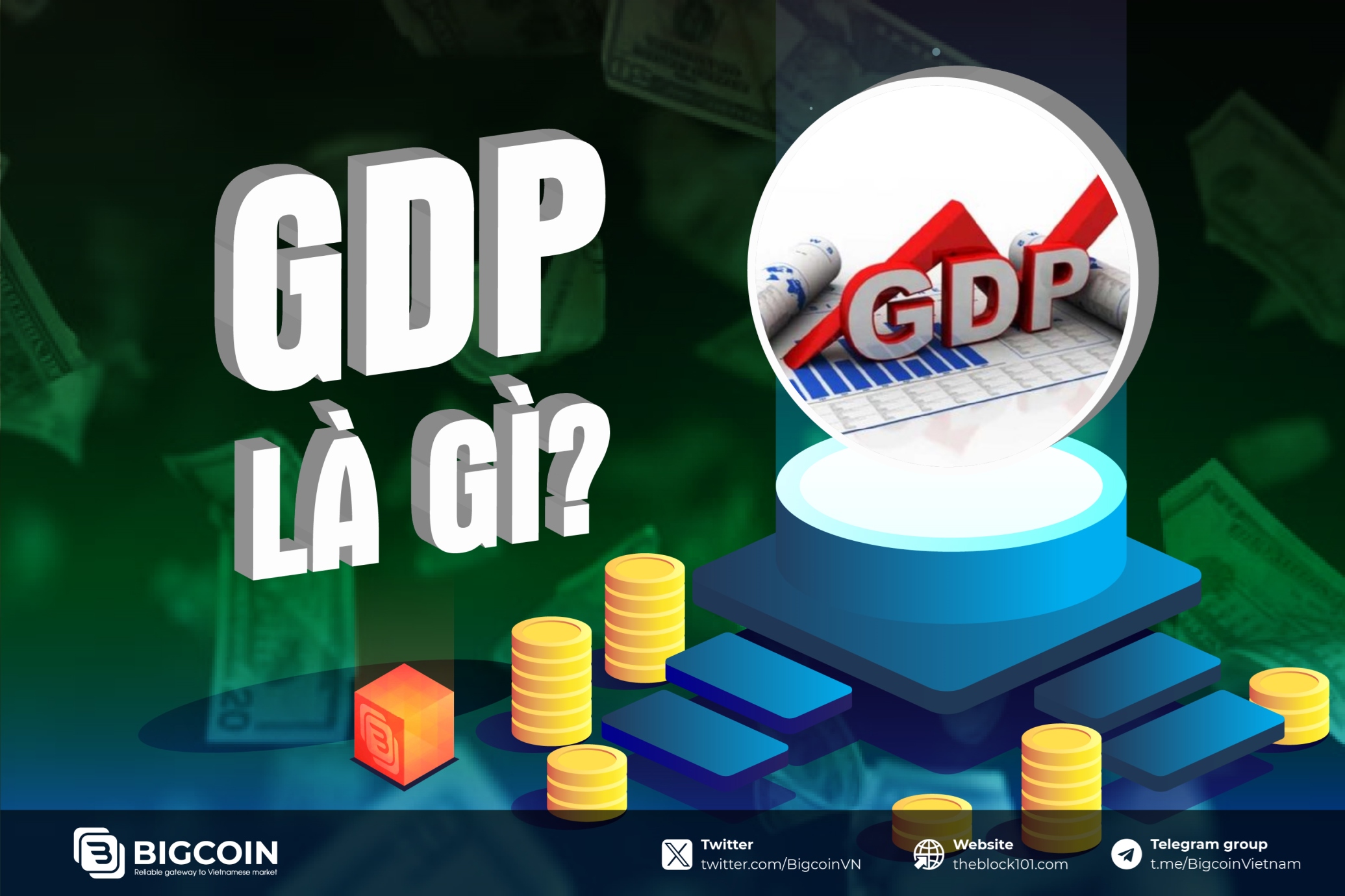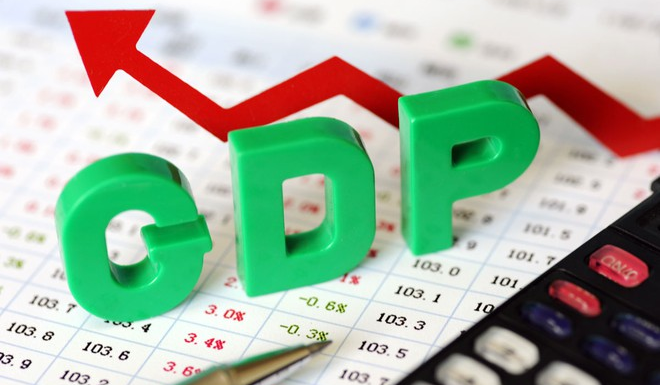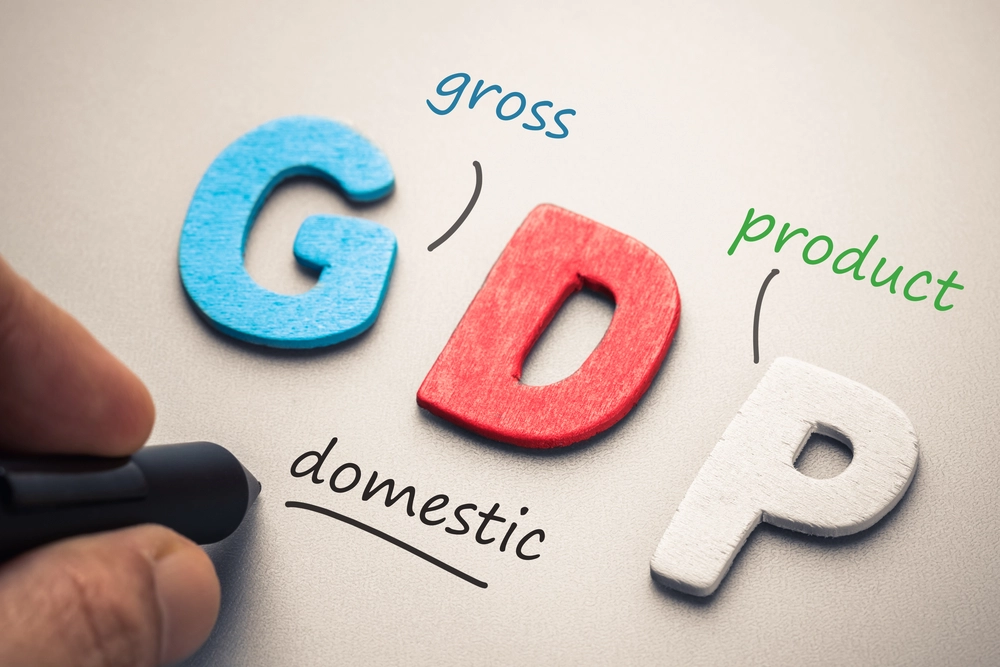1. What is GDP?

GDP (Gross Domestic Product) is an important economic index used to measure the total market value of all final goods and services produced within a given country over a certain period of time, usually a year or a quarter. This index not only reflects the value of products and services, but also represents important aspects of economic activity such as production, consumption, investment and export.
GDP measures total economic output by calculating the total value added at each stage of production of final goods and services. This includes all productive activities of businesses, households, and governments within that country. GDP is considered a comprehensive measure to evaluate the strength and growth ability of a national economy. It allows economists and governments to track changes in production and consumption, evaluate the effectiveness of economic policies, and compare living standards across countries.
2. Formula to calculate GDP per capita

GDP is an important overall indicator of economic activity in a country and is used to evaluate economic growth. There are three main methods to calculate GDP: by production, by final consumption and by income:
2.1. Production methods
When viewed from a production perspective, GDP represents the total value added of all economic activity in a country during a specific period of time.
GDP = Value Added + Import Tax
The added value of each economic sector may include: employee income, wages, insurance, production taxes, fixed asset discounts, and other added values.
2.2. Final consumption method
From the utilization (expenditure) perspective, GDP includes the sum of household final consumption, final government spending, asset accumulation, and the difference between exports and imports.
GDP=𝐶+𝐼+𝐺+𝑁𝑋
GDP=C+I+G+NX
In there:
-
C: Total consumption value for products and services of households.
-
I: Total investment value of investors.
-
G: Total value of government spending.
-
NX: Net exports, is the difference between the value of exports and imports.
2.3. Income method
From an income perspective, GDP includes the sum of labor income, production taxes, depreciation of fixed assets used in production, and producer surplus over an economic period.
GDP=𝑊+𝑅+𝐼+𝑃𝑟+𝑇𝑖+𝐷𝑒
GDP=W+R+I+Pr+Ti+De
In there:
-
W: Salary.
-
R: Rent.
-
I: Interest.
-
Pr: Profit.
-
Ti: Taxes on marketed goods and services and government subsidies for production (net disruption tax).
-
De: Depreciation of fixed assets (depreciation).
3. How does the GDP index affect the national economy?

GDP index plays an important role for a country with the following meanings:
-
Evaluate economic growth: GDP is the main measure to evaluate economic growth. The fluctuation of GDP shows the development or decline of the economy over time.
-
Economic forecast and management: GDP provides important data for economic forecasting and management, helping governments and policymakers adjust interest rates, taxes and public spending effectively.
-
Impact on the market and life: A decline in GDP can lead to economic recession, inflation, unemployment and decline in currency value, negatively affecting business activities and people's lives.
-
Measure living standards: GDP per capita reflects the average income and quality of life of people, helping to compare living standards between countries.
-
Economic structure analysis: Components of GDP such as consumption, investment, government spending and net exports provide detailed insight into the factors driving economic growth and areas that need improvement .
-
Composite index: GDP reflects many aspects of economic activity, from production to consumption and investment, providing a comprehensive view of the health and efficiency of the economy.
It can be seen that GDP is an important index to evaluate, manage and forecast the economic situation, directly affecting economic and policy decisions, and reflecting people's living standards and quality of life. people.
4. Limitations of GDP
.png)
Besides its advantages, GDP also has some notable disadvantages:
-
Not fully reflect self-sufficient activities: Family-owned production activities are not included in GDP, although they contribute significantly to the family economy.
-
Not measure informal values: GDP does not include informal economic activities such as informal work, black market trading, and volunteer work.
-
Ignore intermediate activities: GDP only calculates the value of final goods and services, excluding intermediate activities such as the production of raw materials and semi-finished products.
-
Not measure development and people's lives: GDP does not reflect people's quality of life and happiness, nor does it consider income distribution, environmental quality, health and education.
-
Not adjust for external factors: GDP does not take into account negative impacts such as environmental pollution and resource depletion.
-
Not reflect sustainability: GDP does not indicate whether economic growth is sustainable, and does not take into account overexploitation of resources.
Therefore, although GDP is an important indicator, it needs to be combined with other indicators to have a more comprehensive view of the economy and society.
5. Impact of GDP on the crypto market
When a country's GDP grows, this signifies economic development and the strength of the national currency such as the USD. In this context, the US Federal Reserve (FED) can maintain or tighten interest rate policy to control inflation. High interest rates typically increase the appeal of safe assets such as bonds and bank deposits, reducing interest in risky assets such as cryptocurrencies, leading to a decline in the value of currencies. electronic money.
Conversely, when GDP falls or fails to meet expectations, the value of the national currency can weaken, reducing investor confidence. This may cause them to turn to alternative assets such as cryptocurrencies to protect asset value. If the USD depreciates, the FED can loosen monetary policy, reducing interest rates to promote economic growth, thereby encouraging investment in riskier assets, including cryptocurrencies.
In the context of loose monetary policy, the amount of cheap money increases, investors tend to look for new investment channels, increasing the value of electronic currencies. GDP fluctuations also affect investor psychology, directly impacting investment decisions in the crypto market. When the economy is stable and developing, investors tend to invest more in risky assets with high profit expectations. When the economy faces difficulties, they can withdraw capital from risky assets and look for safer investment channels.
In short, GDP is an important indicator that affects the crypto market through monetary policy, investor confidence, and currency value fluctuations. Investors need to closely monitor economic indicators such as GDP to make reasonable investment decisions.
6. Conclusion
Understanding and tracking GDP is important for investors in the cryptocurrency market. GDP fluctuations can create opportunities and challenges for the crypto market. As GDP increases, the country's currency can increase in value, however, this can pose risks to cryptocurrency investments in the context of possible tightening of monetary policy. Conversely, when GDP falls, investors can look for an escape in the cryptocurrency market to protect the value of their assets. Therefore, tracking and evaluating GDP is an important part of an investment strategy in cryptocurrency.
Read more:

 English
English Tiếng Việt
Tiếng Việt
.jpg)

.jpg)
.jpg)
.jpg)

.jpg)
.jpg)

.jpg)
.jpg)
.jpg)




